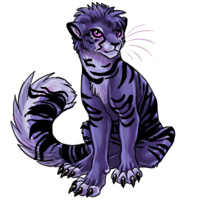Pet Facts



Haruba Facts
|
Wild Harubians can be found mostly in deserts. Their lean bodies don't require large amounts of food to sustain themselves in the heat.
|
|
Even though Harubians originate from the desert most they can be found across Mistica in small territories. The bulk population is generally located in desert regions, then the Inferno Terrain, while the rest of the scattered population can be found on grass plains. Haruba do not like ocean and will only, on extremely rare occasions, be found near beaches.
|
|
The Haruba's ancestors were nearly double the size compared to the Haruba we have today. They were thought to be so large due to the plentiful and larger food, but when the deserts became their homes when their food sources began to diminish.
|
|
Haruba normally eat smaller creatures such as mice, birds, lizards and insects, but they have been known to take down larger prey such as desert deer. Not only do they have to be agile to capture these creatures, but they also have to do it in the most efficient manner in order to save energy.
|
|
Harubians prefer to ambush their prey, but they can also chase their prey for miles if the conditions are right; their incredible stamina allows them to run nonstop for up to 10 miles. The Haruba's top speed is about 40 miles per hour, but they generally will not run this fast and prefer to save energy.
|
|
Since Harubians are so effective in their skills, they have become a nuisance in rural areas. Their efficient abilities and quick paws make them the fast and silent thieves. They have been known to steal anything from food in markets to people's belongings from pockets. Many Haruba will carry around a piece from their greatest thieving victory.
|
|
The stripes on a Haruba are like finger prints: they are unique to the individual. There are never two Harubians that have the same stripe pattern. If you were to shave a Haruba bald, their stripes will be on their skin. The only stripe patterns that are not unique on a Haruba are the stripes around their eyes. Females have two horizontal stripes under their eyes while the males have one.
|
|
Haruba fur is very thin and soft to keep them cool during the day and warm at night. During the hot desert days, though, they usually sleep in the shade and become active at night. Harubians can see about 3 times better at night while during the day they can see about as well as the average Mistican.
|
|
Harubians have well developed legs that give them an edge in speed, while the rest of their body is very light to give them an edge in their agility. Females are half the size of males and, because of this, males have larger spaces between their forepaw pads than females.
|
|
Harubians in the harsh deserts fined it easier to survive on their own instead of worrying about a group. Because of this, Harubians in rural areas are self reliant and trust themselves and no one else. In the rare cases that they do decide to come together, they are mates for life. This usually happens when the two have skills that both sides respect. In all other cases, though, Harubians are competitive and enjoy trying to out do each other in thieving.
|
|
Harubians are very territorial and their territories usually depend on the amount of food in the area and the control of water. Male and female territories will overlap each other, but males will never tolerate sharing their territory with other males. Female territories are usually close to where their mothers' territories are located while males will travel very far to establish their territory when they leave their parents' home.
|
|
Mating pairs between Harubians can sometimes be for life. Life pairs will generally mate year round, but solitary females will only mate once a year. Female Harubians will give birth to about 1-3 kites during the wet season, when the season isn't so harsh and there's plentiful food.
|
|
A female will create a den out of brush and thicket where she will take turns in the care of her kites with her life mate. Solitary females will usually have to leave her kites when she hunts and will only leave under the cover of night. Solitary males do not partake in any role with the rearing of their kites.
|
|
When there is more then one kite in a litter, there's usually a dominant kite. The Harubians competitive behavior creates strong sibling rivalry. They will compete for anything ranging from toys, food and attention. Most kites will develop their own unique skills to try and stand out from their siblings. Young kites stay close to their parents for the first year of their life until their second year. Around 2 years of age Harubians kites will wander further and further away from their parents' territory until one day they will decide to leave completely.
|
|
Some desert tribes worship the Haruba as a deity. Their supernatural speed and their unusual grace have led the tribes to believe that the Haruba are the chosen ones formed from the desert sands to protect them.
|
Go Back
